Cardio vs Weights

If the picture above doesn’t give you some assumptions about what aspect of physical training is more beneficial to your overall wellbeing, than maybe the comprehensive comparison below will! Please read on to learn about why you should find yourself gripping a heavy piece of iron everyday of the week. Below is a more scientific summary of the energy systems our bodies use for exercise.
Anaerobic vs. Aerobic Exercise
Anaerobic processes do not require oxygen, and aerobic processes do. Generally speaking, anaerobic activities are the ones that are short in duration and requiring a lot of power, and aerobic ones are longer duration of a sustained effort. These processes are broken down into three different types of energy systems:
- The Phosphagen System (Anaerobic) – This is the short-bust, high-intensity power stuff like weightlifting and sprinting. It is an all-out effort that lasts only seconds. The phosphagen system uses adenosine triphosphate (ATP) by breaking down creatine phosphate (CP), the latter of which is stored only in very small quantities. When the CP runs out, so does your body’s ability to use this energy system until CP is replenished via a rest interval. As an example, when you sprint you can only go all out for just a few seconds, and then your cells run out of stored CP and you have to slow down and switch over to a slower energy system, such as …
- Glycolysis (Still Anaerobic) – Glycolysis is the breakdown of either glycogen stored in the muscle or glucose delivered in the blood as fuel which serves to resynthesize ATP (instead of CP). It doesn’t do it nearly as quickly as the phosaphagen system does, but it has a much higher capacity so this type of exertion can last longer. An example of using the glycolysis system would be something like basketball, hockey or intense downhill skiing.
- Oxidative System (Aerobic) – This is the lower-intensity, prolonged exertion energy system that relies primarily on carbohydrates and fat as fuel, although protein can be used as well in sustained efforts that last longer than 90 minutes. Things like sustained running (not sprinting), cycling, swimming and couch rugby all use the oxidative system. These are your traditional “cardio” activities.
Duration and Intensity of Energy Systems
These systems don’t work as though one just shuts off and instantly transitions to the next if you switch from sprinting to fast running. Instead, there can be some overlap.
Here is a breakdown of exercise duration, the respective intensity, and the energy system(s) used:
| Duration of Activity | Intensity of Activity | Primary Energy System(s) |
| 0-6 seconds | Extremely high | Phosphagen |
| 6-30 seconds | Very high | Phosphagen and glycolysis |
| 30 seconds to 2 minutes | High | Glycolysis |
| 2-3 minutes | Moderate | Glycolysis and oxidative |
| >3 minutes | Low | Oxidative |
Adapted from Essentials of Strength Training and Conditioning, 3rd Edition
Which is Better?
The question here shouldn’t be, which one do I choose? Rather you should consider a more balanced approach to the process. The fact is too much of anything isn’t a good thing and it works that way for exercising too.
If you lift a lot and avoid cardio you will:
- Have a weaker Heart and Lungs than someone who mixes cardio in.
- Not burn as many calories at each workout.
- Have a harder time losing weight since your workouts wont be as intense.
- Potentially enlarge your own heart by putting too much constant pressure on it.
If you do a lot of cardio and avoid weight lifting you will:
- Train your body to pack on more fat. As you use fat stores for energy more and more, your body looks to keep more reserves of this fuel source around for future use. Thus training your body to hold onto fat.
- Increase odds of injury. Its a fact, long term joint stress leads to injury. There are runners clinics for a reason.
- Burn Muscle at times. Cardio workouts can use muscle as a fuel source. Losing muscle slows the process and keeps your body from reaching its potential.
- Likely fail. I know, thats a negative outlook, but its true. I can’t count how many times I’ve seen the person who comes to the gym and hits that same treadmill or elliptical, for the same amount of time and at the same speed. This person stays the same physically, until they quit from boredom.
You must balance the time you spend between cardio and weights. If this sounds like too much thinking for you, please fill out the contact form below and I will give you some pointers.
[contact-form-7 id=”632″ title=”Contact Form_copy”]

